I don’t do holiday gift guides as marketing copy described as Top Ten Clickbait does not help anyone too much.
My “gift guides” over the years have not changed much. You can read them if that interests you via the linked text.
Not to say Joan and I don’t buy or use new gear. All gear wears out; it’s good to try new things occasionally, and tweaking techniques and the toolkit is a lifelong endeavor for any person.
Overall, we try to find a way to consume less and buy fewer new things regardless of whether it is wool, fleece, or “sustainable” products. That’s the ideal and realistic way of limiting personal impact.
“Use It Up, Wear It Out, Make It Do, or Do Without” still works as a saying nearly one hundred years later.
We all replace or optimize things. Otherwise, we’d all use circa 1996 EMS 5500 packs that weigh 7 lbs.
But there’s a happy medium on the spectrum between holding on to something that’s all duct tape and dental floss and buying the latest and shiniest new thing when you bought the latest and shiniest new thing last year, too.
Decide where you fall on that spectrum and your comfort level for buying new things vs. using what works.
With all that in mind, here are the gear items we used in 2023 that we found particularly useful.
Most are new, some are re-purposed after not being used much after a while, and many are replacements.
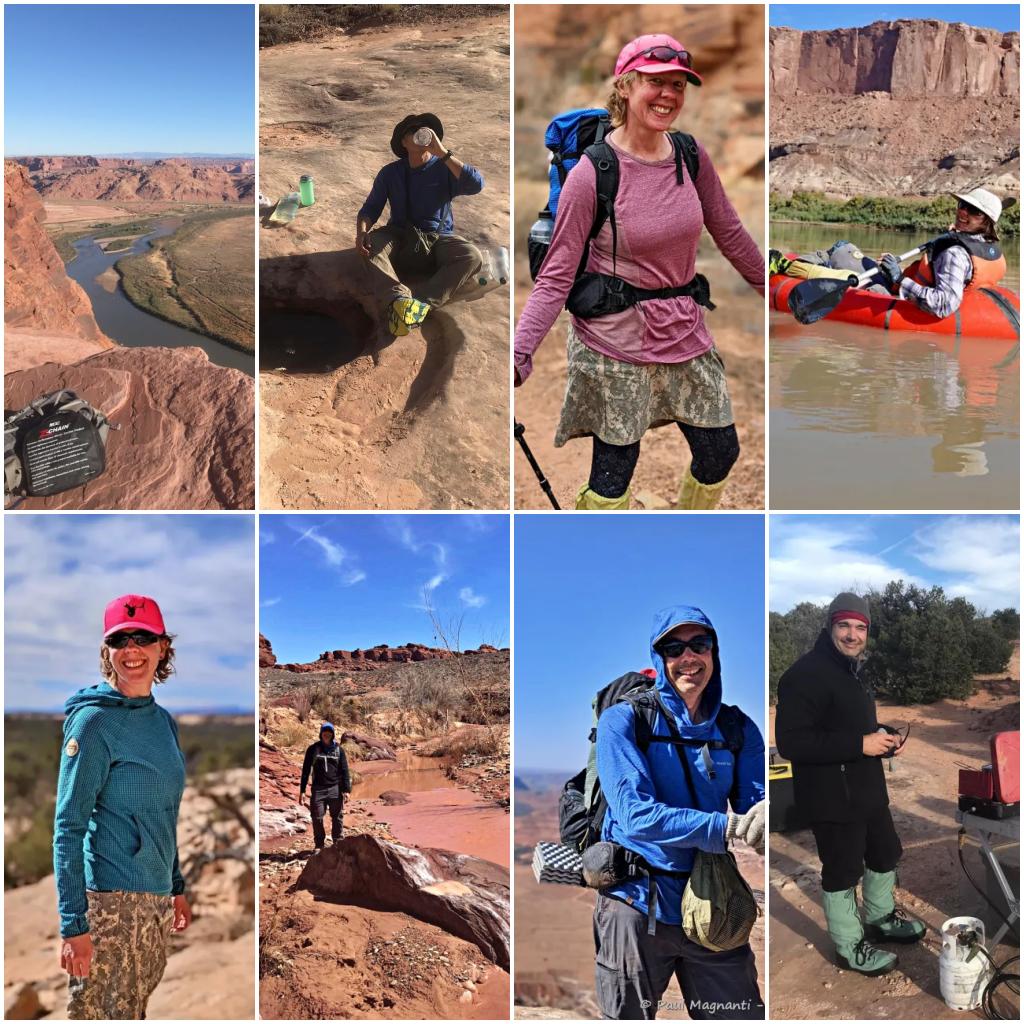
Joan’s Picks
Many of the items Joan used this year reflected that she just plain wore out her gear or clothing. As always, our high desert terrain tends to put a noticeable wear and tear on gear. The UV radiation makes things rot, the dirt makes zippers die, and the freeze-thaw cycle of relatively cold winters (low teens during the day many times) and sweltering heat (100F+) at summer’s peak means a variety of gear for different uses and that needs replacing. Joan’s picks reflect those many variables.
Joan wears these layers in cooler to cold weather. She enjoys that it covers her hips, fits her body well and that the longer arms work well with her height and long limbs; she also notes that the layers include many different sizes from XS and 2XL.

Joan’s rocked the (in)famous Melly fleece for a decade now.
She hikes cold, and keeping her limbs warm while dealing with Reyanuds also makes for an ongoing endeavor. The Melly fleece fitted a good niche for her in the Southeast Appalachians during the cold and wet winters found backpacking and the cold and dry winters here on the Colorado Plateau. But it wore out after many years of constant use. She wanted a replacement and found the Melly hard to get (to put it mildly!), so she purchased the Made-in-the-USA LHG version.
Extremely similar to the Melly, it features the longer arms Joan loves and is available!

- Solo road trip cook kit
When Joan visited her friend to join her for some Arizona backpacking and camping, she realized she enjoyed the curated car camping cook kit we put together for quick camping the night before or after a backpacking trip. However, it’s set up for two people, and call it a legacy of my upbringing; I wouldn’t say I like breaking up toolkits and think it’s better to have separate ones for different purposes.
So we assembled a solo-focused kit using a single-burner propane stove we already owned, an eating kit, a solo cook pot set, a discount store non-stick frying pan, her existing Contigo mug, a few sundry items for cleaning or similar, and threw it in a duffle bag. It always has two fuel canisters and is staged, ready to go in our gear room.
Even if we did not own all this gear previously, it still comes to about $100 for versatile and valuable items that will get used for many trips over the years.
Joan rather liked the kit, and when she had an intern who needed some gear for camping for a couple of weekends over the fall, she made good use of it, too. It is a handy little kit that makes quick car camping trips easy for Joan or someone who needs some gear to borrow with no muss or fuss.
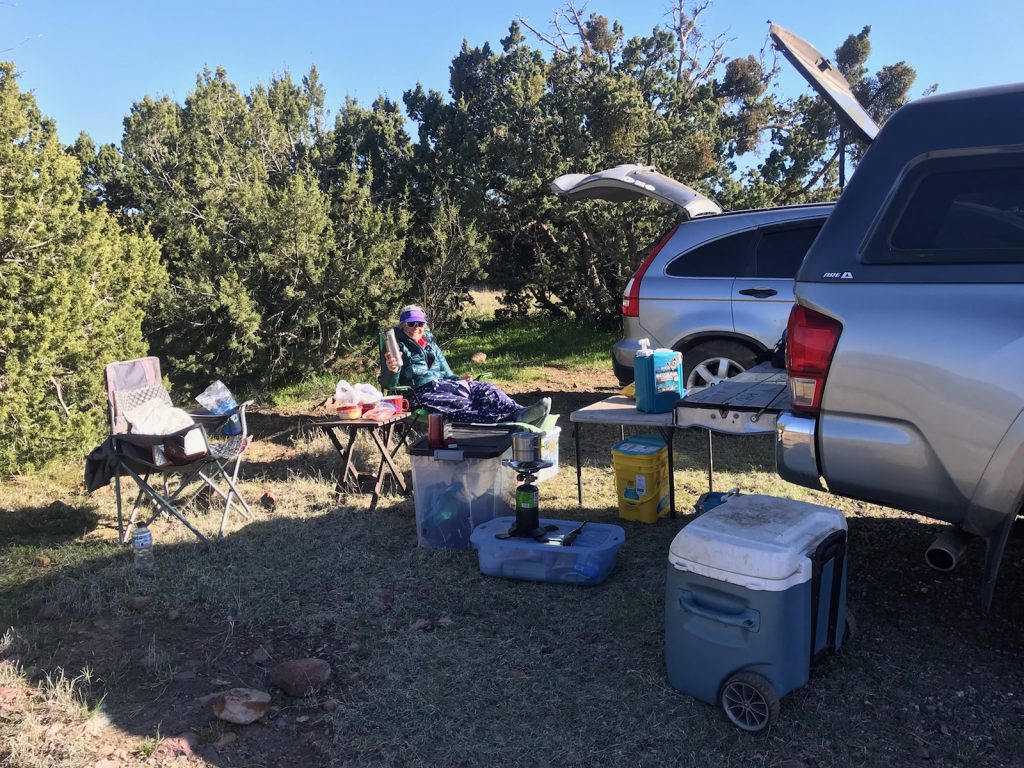
In between backpacking jaunts with Jan. PCO Joan.
At first, I thought Joan made a joke when she told me to ensure I included the tire chains that get little use in Moab itself. Then she reminded me she uses them often during the week as part of her training. Ah!
With the water hauls, heavier winter gear, and packrafting, we do more than typical three-season and on-trail jaunts. And though I willingly schlep gear when needed, Joan wanted to build up for the more ambitious trips we often find ourselves on regularly. Overall, she found it a great success.
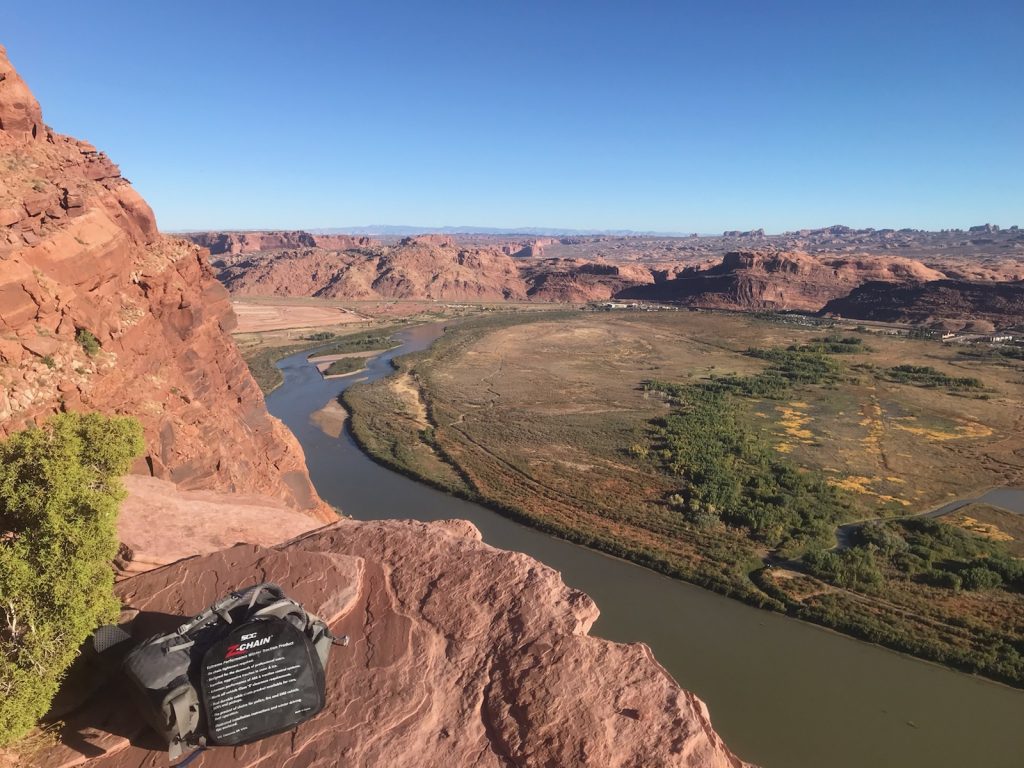
It’s a favorite trail not far from where I am typing. PCO Joan.
- Physical Therapy
Perhaps not gear per se’, but it involved gear over the past three years. Joan tweaked her knee, and the first physical therapist gave advice that did not work for Joan’s active lifestyle. When she tells medical professionals she enjoys hiking, they assume well-maintained trails you’ll find on “Top Ten Trails to Hike in Moab.” Well, as you can guess, that’s not how Joan hikes. It was a frustrating two years as Joan would make some progress, then find her knee would start hurting again.
This past year, she found a physical therapist with an ultra-running background and immediately grasped the kind of hiking Joan enjoys. She crafted exercises, gave Joan great advice, and adapted the treatment over the ebbs and flows.
Joan did the hikes she wanted and was confident about being out for many days without fearing re-injury. She finished her dream of completing the Pacific Crest Trail!
Our Picks
We had various gear needing replacement this year, such as our two-burner propane stove (replaced with a similar one), fleeces, yet another camp stove, etc. You use gear; you need to replace it.
Of course, we found a new piece of equipment that fits our niche well for us and decided that a piece of gear we use for casual trips works better for our needs overall.
The Squak reflects the running roots of the company founders and makes an excellent garment for colder weather pursuits. I’ve used it for cold weather backpacking, biking around town, and ski tours. Joan essentially lives in hers all through the fall and winter.
Overall, it is one of our favorite purchases from this past year.

We’ve found these sub-$30 paddles work well for our packrafting trips with only a 3oz penalty over similar paddles that cost much more. They require little maintenance vs. carbon ones (good for extended trips), give more control in the water, and need less TLC than the “Ninja Paddles” (that admittedly weigh half but aren’t as reliable in the field.)
I’m sure the more expensive paddles work better, but I am not sure how much better for the level of paddling we are doing. And they are good enough for us.

- One-burner stove replacement
As detailed above, we made a solo camping kit for Joan when she took off a few times this year to see her friend and enjoy her extended trips.
This made for an excellent opportunity to use gear credit at our local outdoor consignment store to purchase a Coleman one-burner stove. It’s more stable than the traditional upright stove, simmers well, and fits on our truck tailgate quite nicely.
Perfect for quick pre-backpacking trips or some hot drinks post-trip. It does pot out fewer BTUs vs. the more familiar stove, but I find a simple windscreen makes for much quicker boils.
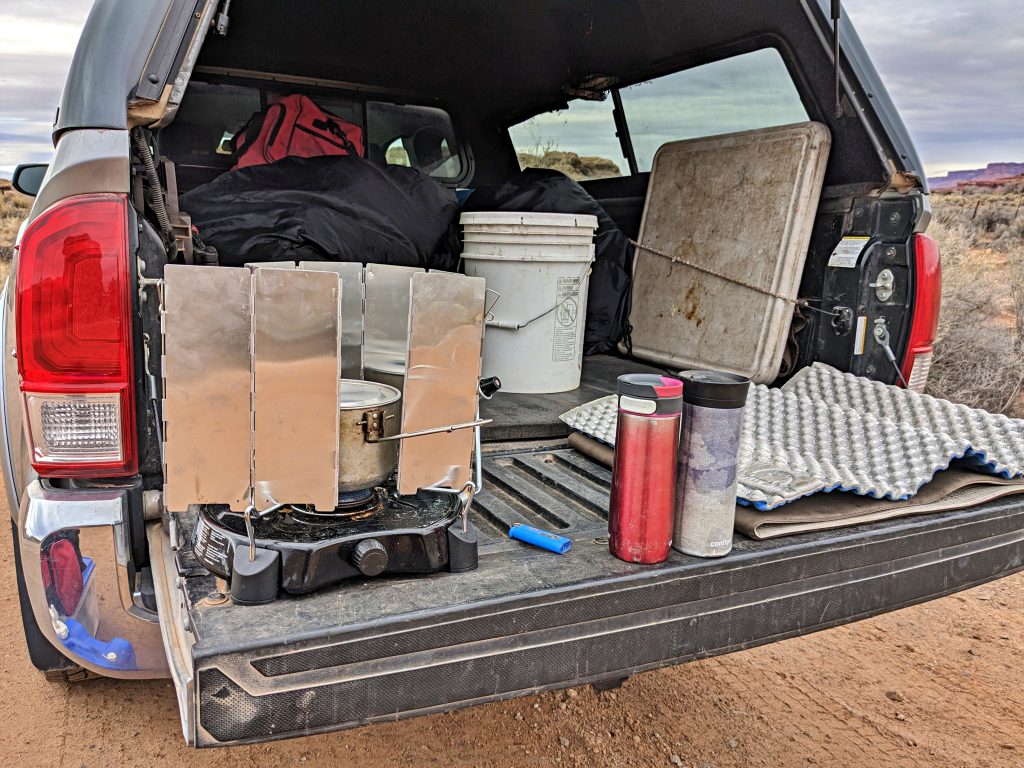
A passion project for the well-known author Steve Allen, Joan and I often consult this book both pre and post-trip. It’s a wormhole that sucks you in every time you look through its pages. It’s a piece of “gear” we’ll look at, absorb, and appreciate for many years to come. It only adds to our appreciation and love for this place we now call home.

Paul’s Picks
My picks reflect replacing some favorite shoes, trying out some new ideas, and replacing an old stalwart after a few years.
For cold and dry weather, I’ve used these inexpensive (~$50 a pair), practical, and surprisingly comfortable boots for the cold-weather camping we do on the Colorado Plateau. Bunny boots still work best for cold and wet weather or extreme cold, but the mukulks are less heavy, bulky, and easier to pack.

PCO Joan.
- Montane Allez Hoodie
A thank you gift from my good friend Cam Honan (aka Swami of The Hiking Life) for some webwork I did.
This sub-7oz layer (Men’s UK large, roughly a Men’s US Medium) Polartec grid fleece became a favorite piece for active three-season hiking and an adjunct for cold weather use. It’s a bit like the famous Patagonia R1 hoodie but lighter, more versatile, and more backcountry-oriented, in my opinion.
The Allez is highly breathable, surprisingly warm for its weight, and more durable than the popular alpha fleeces. Alas, it is no longer made, but the similar Kuiu Peloton 97 pullover fits a niche that the Montane used to fill.
It’s a piece I initially expressed skepticism over its use but quickly became a favorite.

PCO Joan
I have not had good luck with sun hoodies recently and prefer my Western snap shirts for my hot weather hiking. However, I tried it again with a Montbell Merino Wool Plus Light Hoodie and found it to hit the sweet spot for ~45F to ~70F hiking. I sized it up for ventilation and comfort, keeping me cool and dry while providing sun protection. It’s telling that I grabbed it every weekend from the fall until the cold weather moved in, and I was thinking of getting a second one for this early spring.

I stopped regularly hiking in boots about two decades ago and prefer trail runners on even more technical terrain. However, a simple pair of light-duty hiking boots still has a place in my kit for trail work, the occasional slushy hiking, for camping, and a pair of warm and dry shoes to change into post-trip. For years, I used Hi-Tec Altitudes to fit this niche as (relatively) light and affordable boots that did the trick.
This past year, I had a chance to use similar NortiV8 boots. Selling for under-$60, it’s telling that these boots are by my front door and what I slip into once it is no longer sandal season. These boots are no frills, do the job, and a piece of gear I don’t think about. They work.

- Topo Ultraventure 3
I wrote about the Topo Ultraventure 2s and found them nearly perfect shoes for me and my use. Comfortable, good grip for varied terrain and off designated trails, and a worthy successor for the Salomon shoes I have enjoyed using for a few years.
I replaced my Ultraventure 3s (more to come) and found they worked even better. The mesh keeps out the small prickly things better, less dirt gets let in, and I have had no issues hiking the canyons, the mountains, and places in between. I bought two more pairs and think I will find my hiking shoes now and hopefully for a while.
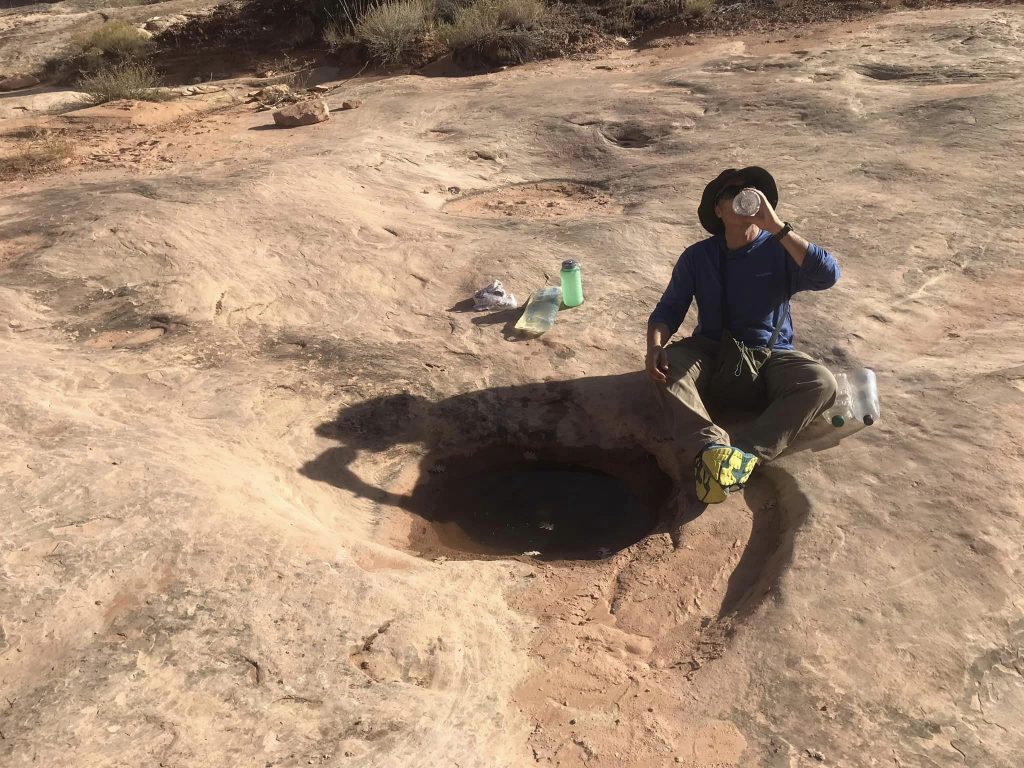
At a pothole this past November. PCO Joan.
~~~~~
And that’s the gear we liked this past year. We’ll see what 2024 brings. I suspect a continuing replacement trend, trying new techniques, and repairing current stalwarts.
Disclosure – We purchased all the gear ourselves. The exceptions include the Montane as a gift with the Nortiv8 boots and the Montbell hoodie provided for reviews.

“However, it’s set up for two people, and call it a legacy of my upbringing; I wouldn’t say I like breaking up toolkits and think it’s better to have separate ones for different purposes.” I struggle with this.. we have a big black box with a 2-burner Coleman white fuel, and a bunch of things for the 4-person family. One of those persons is doing his own adventures now, the other is an indoor enthusiast, but I can’t bring myself to break it up yet.. So then I put together the one or two person kit on the fly every… Read more »
Thanks! I appreciate the kind words.
As a kid in the NE we had a pair of those mukluks by the front door and whichever kid was going to shovel snow put them on.
I always appreciate the reminder to stay frugal and just replace what broke or fits a present need rather than a theoretical one.
We try. Occasionally we’ll splurge on something, but overall we try to keep what we purchase consistent.